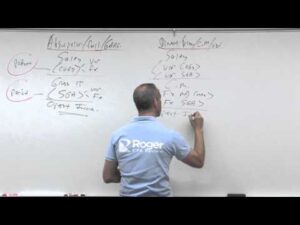No assurances can be made that any such estimate, target or projection will be accurate; actual results https://kelleysbookkeeping.com/sample-invoice-template/ may differ substantially. Before we move further, let’s first learn how the price of a bond is set.
A bond trades at par when the current price is equivalent to the issued face value. However, its price varies when a bond enters the open market and is available for trade. Paying straight-line amortization of bond discount or premium over the life of the bond is very complicated and not recommended. The yield to maturity (YTM) is the speculated rate of return of a bond held until maturity. Finding the YTM is much more involved than finding the current yield.
A bond trading higher than its original price/par value in the secondary market is termed as Premium Bond. A premium bond is a bond when the given interest rate surpasses the interest rate proposed by new bonds. As we delve into the bond industry, we must comprehend the primary difference between premium and discount bonds.

This could negatively impact investors with heavy tax burdens, because it makes the swap more difficult and costly to execute. Still, the bond is “callable,” which means that it can be redeemed—or called—(and the principal paid off) before it matures if the issuer chooses. Issuers are more likely to call a bond when rates fall since they don’t want Premium Vs Discount Bonds to keep paying above-market rates. This means that some of the capital the investor paid could disappear. Then, the investor would receive fewer interest payments with the high coupon. While determining whether to invest in premium or discount bonds, it is imperative to analyse whether it is a perfect match for your investment strategy or not.
It also assumes that all coupon payments are reinvested at the same rate as the bond’s current yield. YTM is an accurate calculation of a bond’s return that enables investors to compare bonds with different prices, maturities, and coupons. Given equivalencies in maturity, credit worthiness, and industry, we want to purchase bonds with the highest YTM. A bond that is trading above its par value (original price) in the secondary market is a premium bond.
A discount bond is a bond that is issued for less than its par—or face—value. Discount bonds may also be a bond currently trading for less than its face value in the secondary market. A bond is considered a deep-discount bond if it is sold at a significantly lower price than par value, usually at 20% or more.